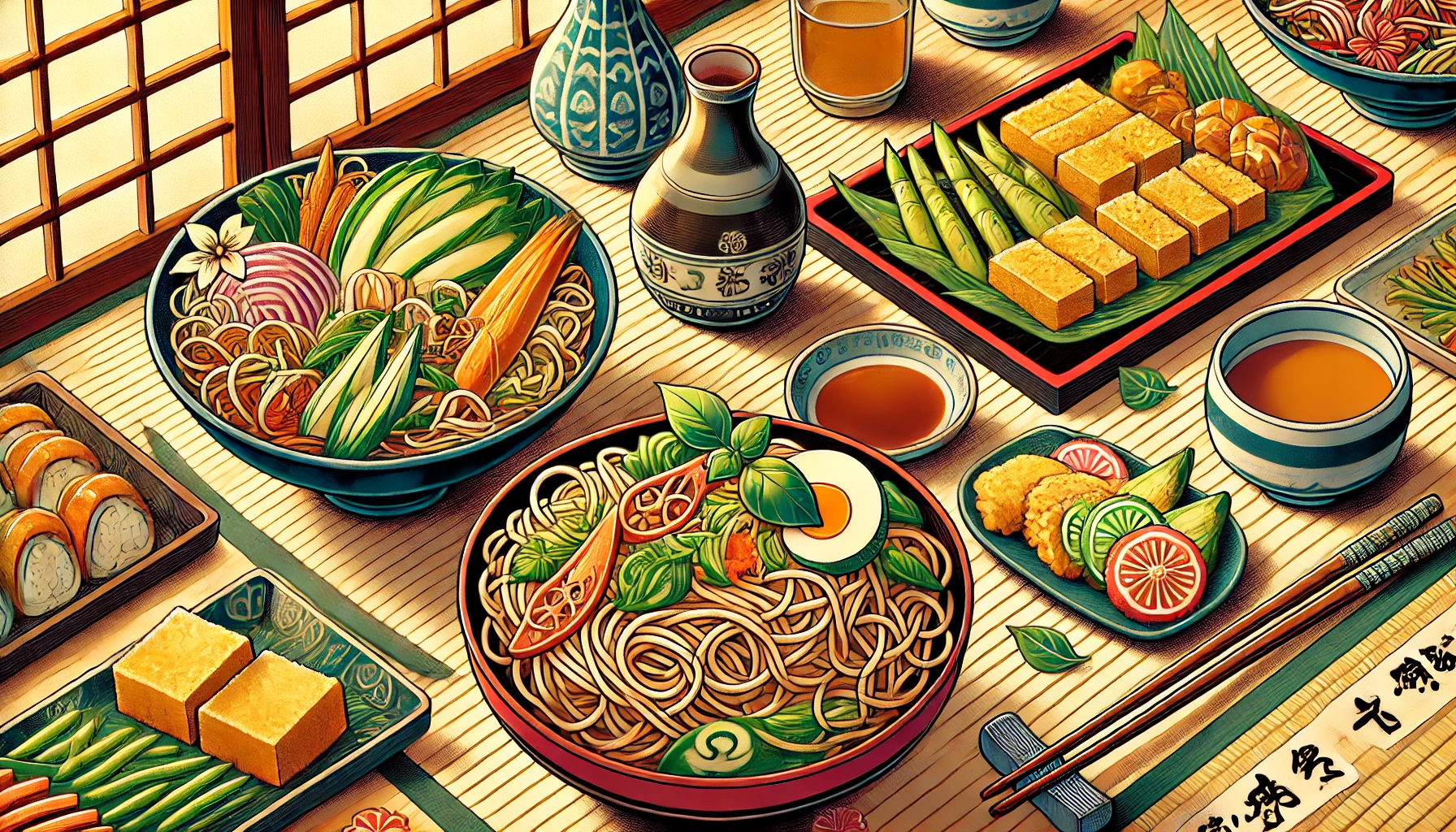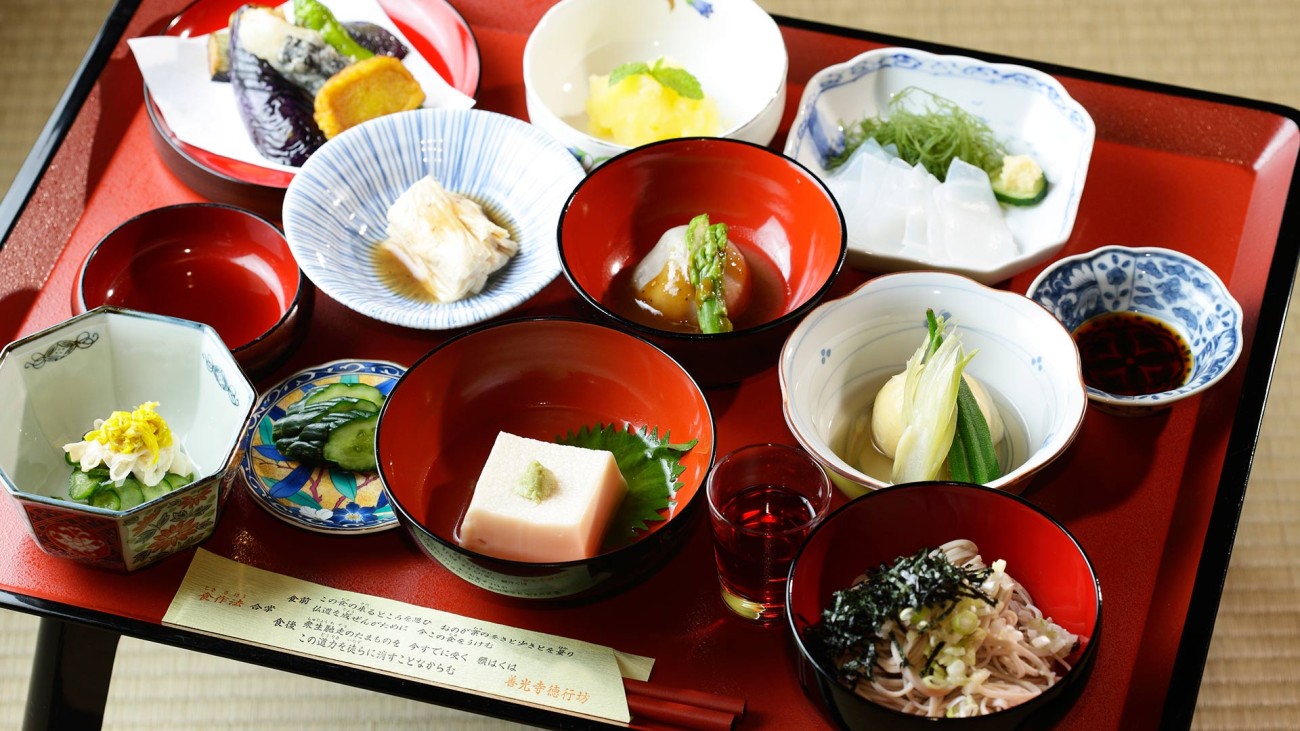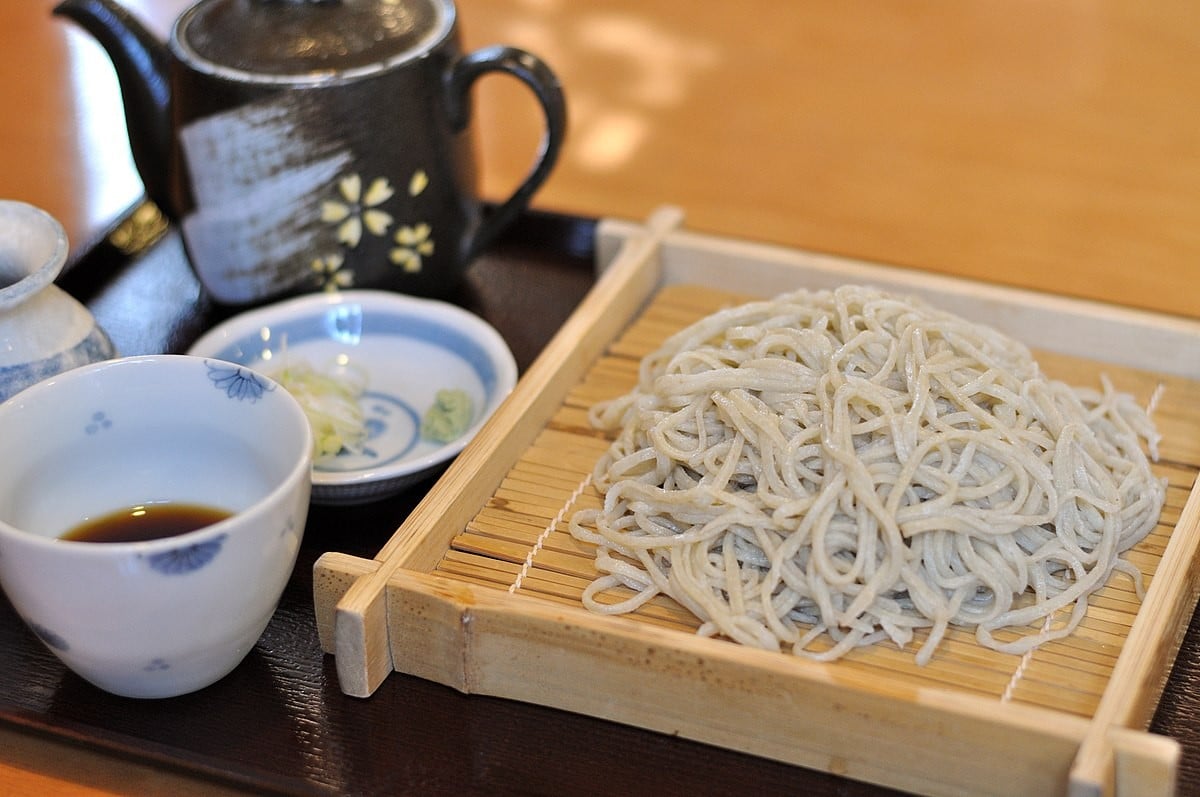Traveling to Japan as a vegetarian or vegan may seem like a challenge, but with proper planning, it's possible to enjoy the amazing Japanese cuisine without compromising your dietary principles. Despite the frequent use of animal-derived ingredients, there is a variety of dishes and restaurants tailored for those who do not consume meat or animal products.
In this complete guide, we will cover everything you need to know to have an unforgettable dining experience in Japan, from naturally vegetarian dishes to essential tips to avoid unpleasant surprises.
Read also: The 100 most popular Japanese meals in Japan
Table of Content
Understanding Japanese Cuisine
The foundation of Japanese cuisine includes rice, noodles, fresh and fermented vegetables, tofu, miso, and mushrooms, which may seem promising for vegetarians. However, many dishes that appear to be meat-free contain hidden ingredients of animal origin.
Animal Origin Ingredients to Avoid
Even in dishes that seem vegetarian, it is common to find ingredients such as:
- Dashi (fish broth) – widely used in soups, sauces, and even in rice.
- Katsuobushi (dried fish flakes) – commonly used as toppings in dishes like okonomiyaki and takoyaki.
- Conventional shoyu – Some brands may contain fish traces or be fermented with animal-based ingredients.
- Gelatin (ゼラチン – zerachin) – present in traditional sweets and desserts.
- Lard oil – used to fry some types of noodles or dumplings.
Therefore, learning some key words in Japanese or using flashcards can be essential to avoid these ingredients.

Where to Eat: Best Options for Vegetarians and Vegans
Specialized Restaurants
The number of vegetarian and vegan restaurants has grown in Japan, especially in big cities like Tokyo, Kyoto, and Osaka. Some of the highlights include:
- Ain Soph (Tokyo, Kyoto) – a network of 100% vegan restaurants that offers sophisticated dishes, such as burgers and desserts.
- T's Tantan (Tokyo) – specializing in vegan ramen, located inside some train stations.
- Saido (Tokyo) – voted one of the best vegan restaurants in the world, with dishes inspired by traditional Japanese cuisine.
- Mumokuteki Café (Kyoto) – homemade Japanese food without meat, in a cozy atmosphere.
In addition to specialized restaurants, many Buddhist temples offer shojin ryori meals, a traditional vegetarian cuisine.
How to Find Plant-Based Restaurants in Japan
If you are in a smaller city, it may be more difficult to find vegetarian options. Fortunately, there are apps and websites that help locate restaurants that cater to special diets:
- Google Maps – search for "vegan restaurant" or "vegetarian restaurant" may bring good local options.
- HappyCow – one of the most popular apps for finding vegan and vegetarian restaurants.
- Vegewel – Japanese platform that lists vegetarian restaurants and cafes by region.
Strategies for Finding Plant-Based Options
Specialized Restaurants
In the major cities of Japan, the availability of vegetarian and vegan restaurants has been growing. Establishments like Izakaya Masaka in Shibuya, specialized in vegan "fried chicken," and Komaki Shokudo Kamakura Fushikian in Akihabara, which offers a modern version of Buddhist cuisine shojin ryori, are examples of places where you can enjoy meals without animal-derived ingredients.
Use of Apps and Online Communities
Tools like HappyCow and Vegewel are useful for locating vegetarian and vegan restaurants in various regions of Japan. Additionally, participating in online communities, such as Facebook groups dedicated to veganism in Japan, can provide up-to-date recommendations and valuable tips.
Effective Communication
Due to language and cultural barriers, it is advisable to carry explanatory cards in Japanese detailing your dietary restrictions. This can facilitate communication in restaurants and ensure that your needs are understood and respected.

Traditional Dishes Safe for Vegetarians and Vegans
If you can't find a specialized restaurant, you can still enjoy many traditional Japanese dishes. Here are some safe options:
- Zaru Soba – buckwheat noodles served cold with sauce on the side. Just make sure the sauce doesn't contain fish dashi.
- Vegetable tempura – battered and fried vegetables (ask if the oil is vegetable).
- Umeboshi or kombu onigiri – rice cakes filled with salted plum or seaweed.
- Yuba (tofu skin) – a sophisticated dish made from the upper layer of heated soy milk.
- Shojin Ryori – Vegetarian cuisine practiced by Buddhist monks the vegetarian cuisine of Buddhist monks, found in temples and some restaurants.
Avoid Common Pitfalls
Even dishes that seem safe may contain non-vegetarian ingredients. For example:
- Sopa de miso – it usually contains fish dashi. Request without dashi ("ダシなし" - dashi nashi).
- Tsukemono (Japanese pickles) – some are marinated with fish sauce.
- Japanese curry – most ready-made sauces contain meat or meat broth.
Always ask or check the ingredients before consuming.

Practical Tips for Eating in Japan Without Worries
1. Use Explanatory Cards in Japanese
Due to language and cultural barriers, it is advisable to carry explanatory cards in Japanese detailing your dietary restrictions. This can facilitate communication in restaurants and ensure that your needs are understood and respected.
To facilitate communication, carry a card with phrases such as: I am vegetarian. I do not eat meat, fish, seafood, dashi, or gelatin.
私はベジタリアンです。肉、魚、魚介類、ダシ、ゼラチンを食べません。
Watashi wa bejitarian desu. Niku, sakana, gyokairui, dashi, zerachin o tabemasen.
If you're vegan, add: I also don't eat eggs or dairy.
"卵や乳製品も食べません。
Tamago ya nyūseihin mo tabemasen.
2. Supermarkets and Konbini
If you're having trouble finding restaurants, the kombinis (convenience stores) can be an alternative. Some safe options include:
- Edamame – steamed soybeans.
- Fresh fruits and salads – available in most markets.
- White rice and seaweed – basic and easy to find.
- Vegan snacks – seaweed potato chips, rice crackers without animal additives.
3. Accommodation with Kitchen
If you're staying longer in Japan, consider renting an apartment or staying in a hostel with a kitchen. This way, you can cook your own meals with fresh ingredients bought at local markets.
Is it Possible to Be Vegetarian in Japan?
Although vegetarianism and veganism are not yet widely practiced in Japan, it is completely possible to enjoy Japanese cuisine without consuming meat or animal products. With planning, knowledge of the ingredients, and good communication strategies, you can have an amazing and worry-free culinary journey.
Whether exploring Buddhist temples with traditional meals or discovering vegan restaurants in big cities, there are always options for those who want to enjoy Japan without sacrificing their diet.
Now that you know everything about how to eat well in Japan as a vegetarian or vegan, how about sharing this guide with your friends who also have dietary restrictions? Safe travels and enjoy your meal!
To deepen your understanding of vegetarian and vegan options in Japan, check out the video below:
